Thanks to all of your positive support of the Docker subscription updates we announced on Aug 31, 2021, we’ve been able to focus on delivering more value to all users, starting with making Volume Management available for users on any subscription tier, including Docker Personal. Just update to Docker Desktop 4.1 to start using it.
Volume management gives you an easy way to manage and explore your volumes so you can identify which volumes are being used, what containers they are being used by and what data is in the volume. Now, personal users can view, download and delete contents from inside a volume.
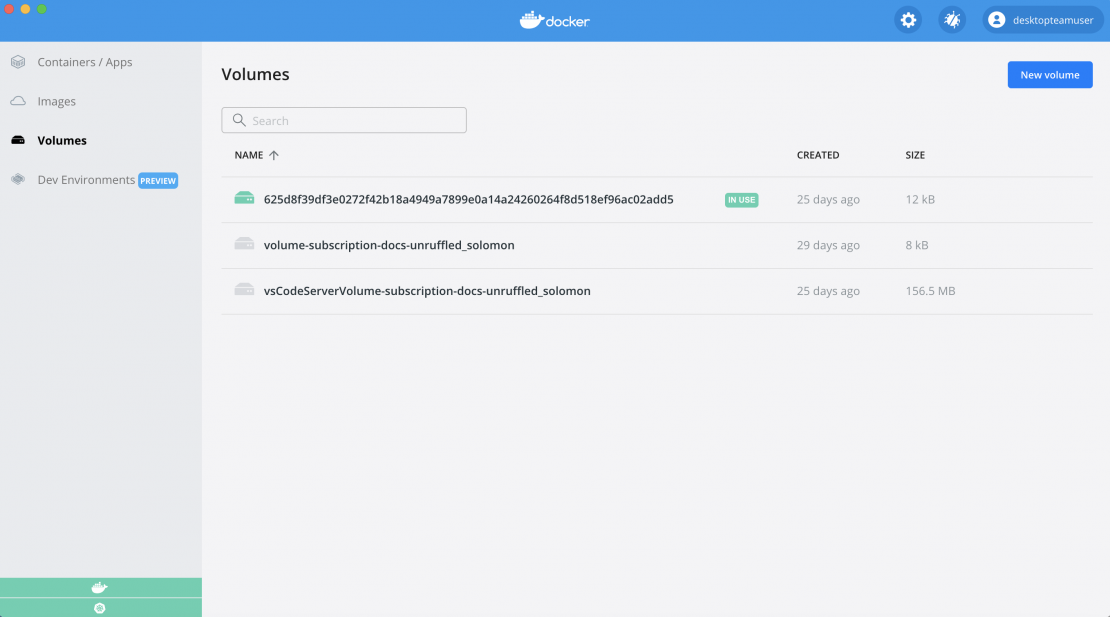
You’ll be able to explore the contents of the volumes so that you can more easily get an understanding of what’s taking up space within the volume.
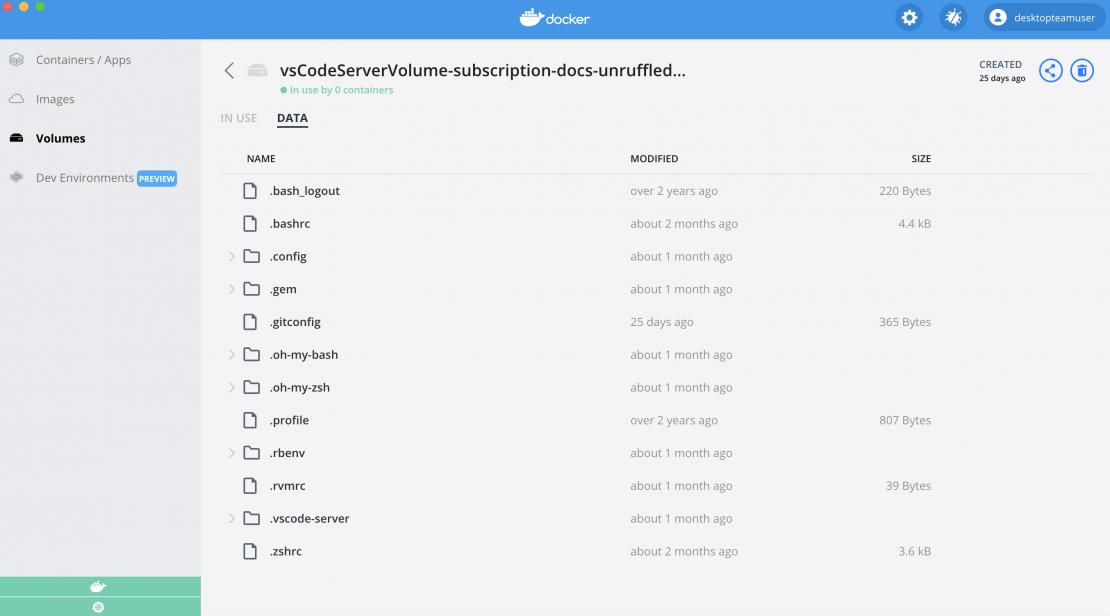
You’ll also be able to easily see which specific containers are using any particular volume.
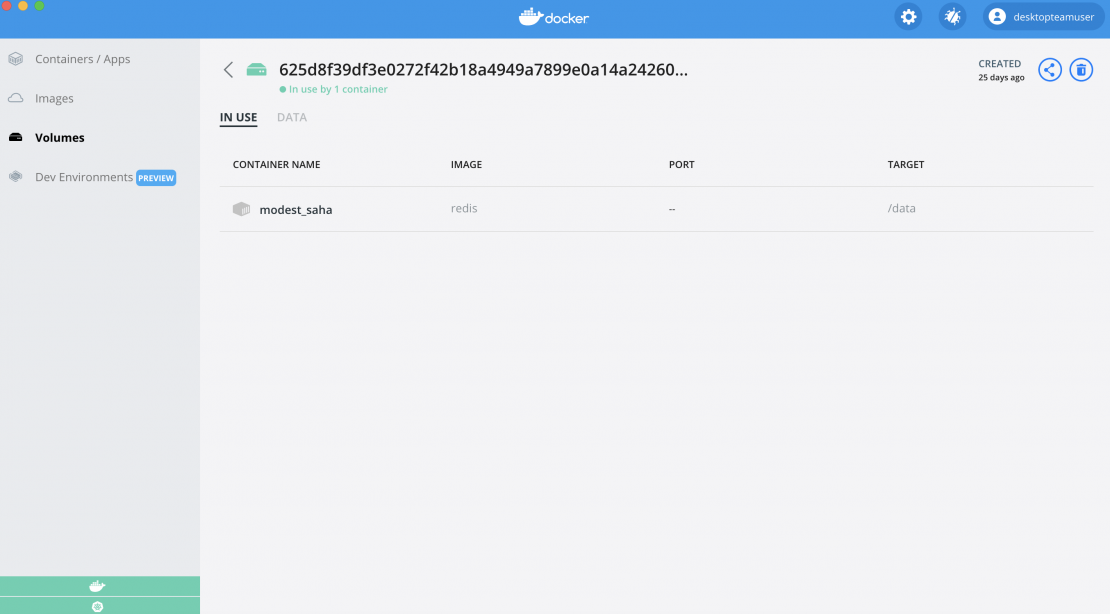
We’re continuing to enhance Volume Management and would love your input. Have ideas on how we might make managing volumes easier? Interested in sharing your volumes with colleagues? Let us know what you’re interested in using here.
Docker Dashboard Update Settings
We’re continuing to enhance the update process, and now with Docker Desktop 4.1, you will be notified when a new update is available in the updates settings section. You can choose to view more details on what’s new or start the download process straight from the dashboard.
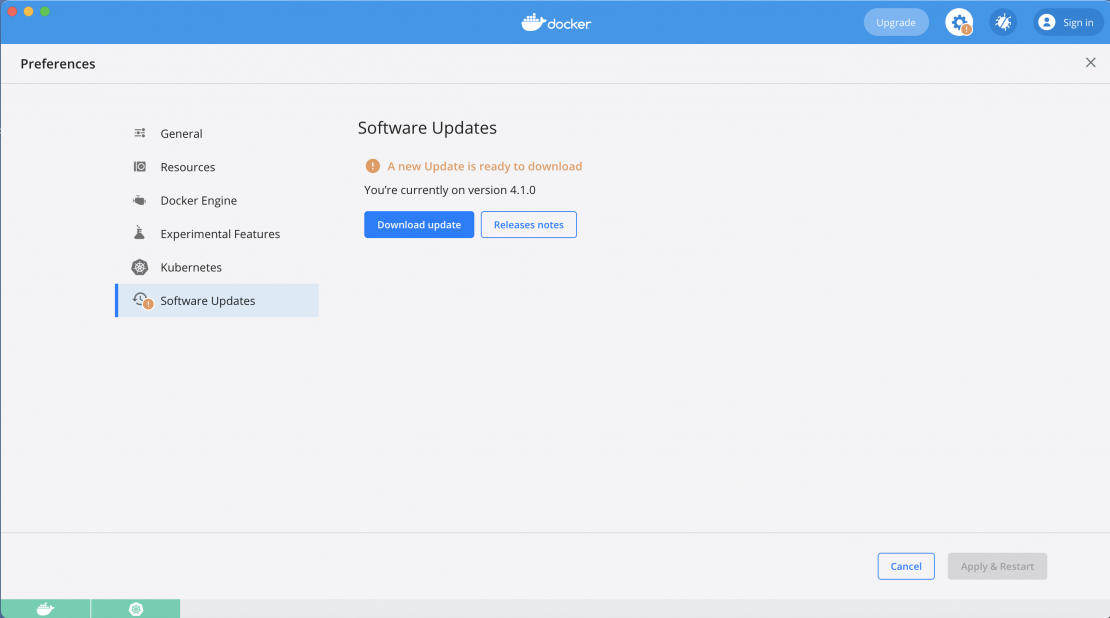
If you use Docker Desktop at work you may need to stay on a specific version or need an IT admin to install an update, you may want to turn off checking for updates all together, which will disable the badge icon in the dashboard as well. Users on a paid team or business plan can do so by unchecking the “Automatically Check for Updates” setting in general.

This is just phase one, we are looking to provide a more flexible experience to users on how they want updates to be handled by providing additional optional settings. Let us know what you would find the most useful here!
We <3 when folks try new versions, staying up to date makes sure you have the latest features (like volume management with Docker Personal!) and helps us provide you the best experience as we are continuously addressing issues identified with each release. We also love to hear your feedback on the new stuff we’re putting out there.
Docker Compose V2
We’ve released Docker Compose v2.0.0, it is now fully supported for users. We’re still working on providing a more standard installation path for Linux users, but all of the feedback you have given us in the past 3 months since we released the beta version has helped us identify issues and made us confident that it’s ready to be fully supported.
You can use this functionality by running the docker compose command, dropping the – in docker compose. We are continuing to roll this out gradually, you’ll be notified if you are using the new docker compose (meaning docker-compose will alias to use docker compose).
You can opt-in to run Compose v2 with docker-compose, by running `docker-compose enable-v2 command` or by updating your Docker Desktop’s settings.
If you run into any issues using Compose V2, simply run docker-compose disable-v2 command, or turn it off using Docker Desktop’s settings. Let us know your feedback on the ‘compose’ command by creating an issue in the Compose GitHub repository.
Self Diagnosis Tool
Most of the time Docker Desktop runs smoothly … but occasionally it doesn’t. And because it interacts with some of the lowest level parts of your OS (virtualization, networking, file system etc.) it’s often hard to figure out exactly what has gone wrong. So we’ve written a new self-diagnosis tool to help diagnose some of the most common problems, and where possible explain how to fix them. We released this quietly in version 3.6.0, so you may have noticed it already, but we’ve been improving the checks based on user feedback in real-world examples, and we’re now ready to launch it officially.
To try it out, use this command in PowerShell:
& C:\Program Files\Docker\Docker\resources\com.docker.diagnose.exe check
or this command on Mac:
/Applications/Docker.app/Contents/MacOS/com.docker.diagnose check
The tool runs a suite of checks and displays PASS or FAIL next to each one. If there are any failures, it highlights the most relevant ones at the end.
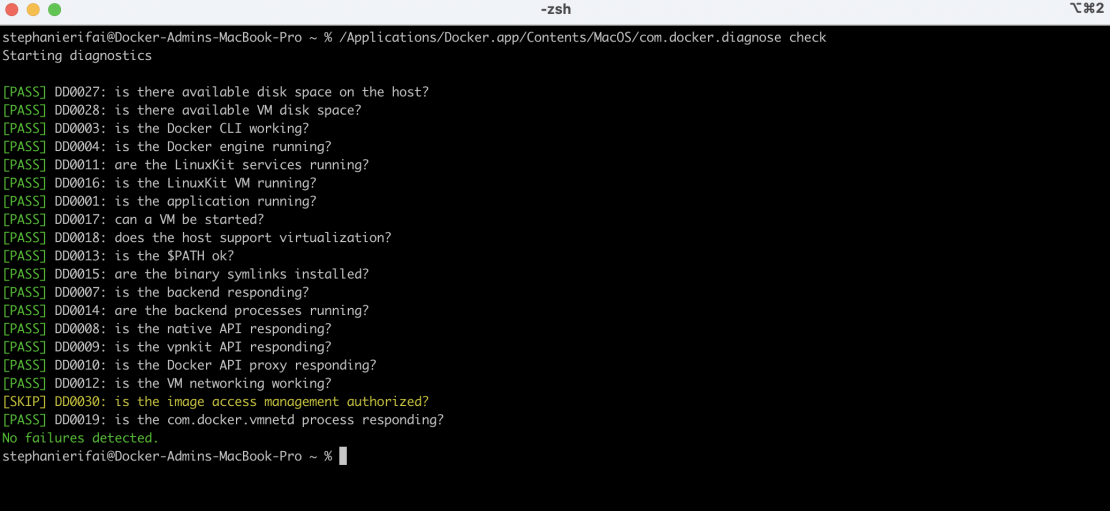
Please let us know your feedback on this new tool in the docker/for-win or docker/for-mac repository. Did it help you, or did it misdiagnose your problem? Are there more checks we could add?
